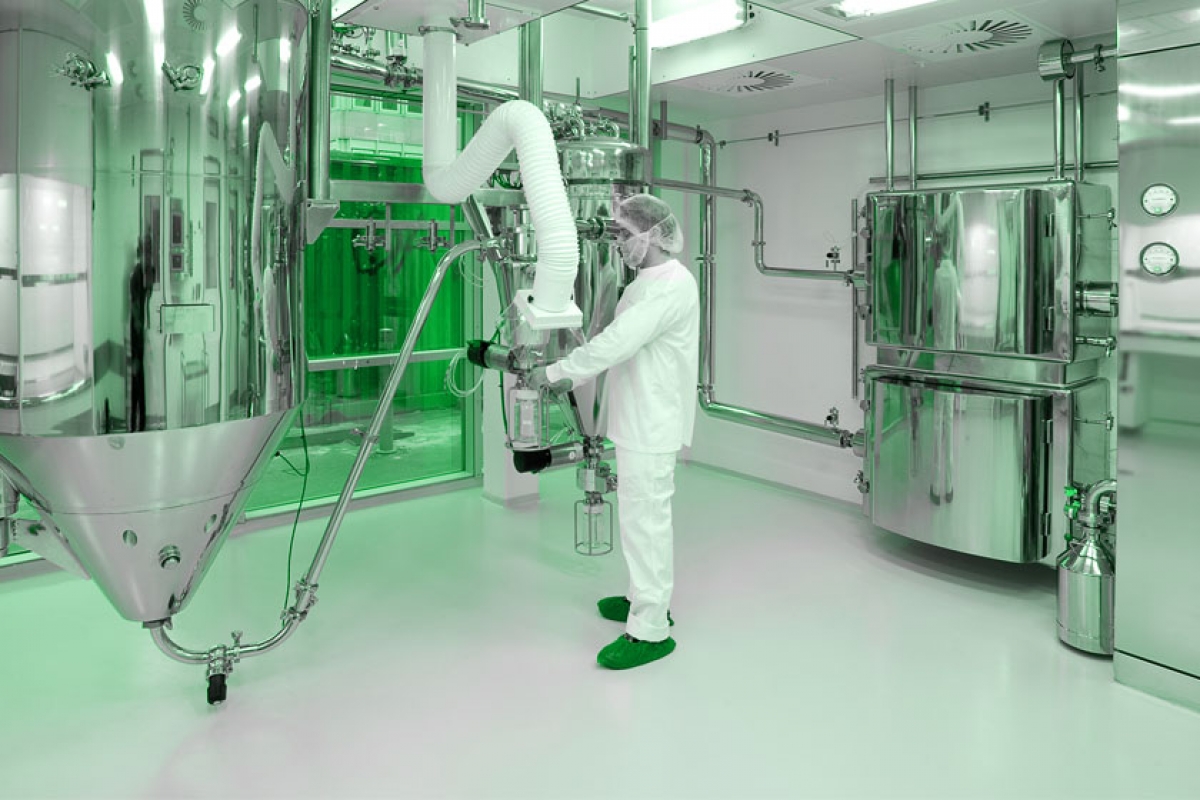
The effects of contamination
Contamination poses a significant risk to technical processes, experiments or production activities, as well as to the individuals involved. Unguarded proliferation of contamination can quickly lead to product damage, yield reduction, product recalls and other outcomes highly detrimental to business. Products in a range of industries are recalled due to ineffective contamination control systems.
Based on this evidence it could be argued that many businesses are not adequately protecting themselves from the harmful effects of contamination, and many products in many industries are being recalled due to unsafe manufacturing processes.
Body movement causes contamination, and protective clothing such as hats, cleanroom suits and face masks are accordingly basic items of contamination control. Apart from people, another common way for contamination to enter is on the wheels of trolleys used to transport equipment.
To prevent airborne contamination, high-efficiency particulate air (HEPA) filters, airlocks and cleanroom suits are used. HEPA filtration systems used in the medical sector incorporate high-energy ultraviolet light units to kill the live bacteria and viruses trapped by the filter media. These measures restrict the number of particulates within the atmosphere and inhibit the growth of those that are viable.
Sticky mats
Studies by 3M show that over 80% of contamination enters the cleanroom through entrances and exits, mostly at or near floor level. To combat this problem, suitable flooring systems are used that effectively attract, retain and inhibit the growth of viable organisms. Studies show that the most effective type of flooring system is one of polymer composition.
Polymer mats are particularly effective due to their suppleness as they allow for more contact with serrations on shoes and wheels and can accommodate more particles while still remaining effective. An electrostatic potential adds to the effectiveness of this type of contamination control as it enables particles to be retained until the flooring is cleaned. This method of attracting and retaining particles is more effective than mats with an active adhesive coating which needs to be peeled and is often not as supple. As long as the tack level of the mat is greater than the donor's (such as a foot or a wheel), the contamination touching the surface will be removed. Very high tack surfaces pose a contamination threat because they are prone to pulling off overshoe protection. Polymeric flooring is produced to ensure a higher level of tackiness than the surfaces it comes into contact with, without causing discomfort and potentially damaging 'stickiness'.
Copper alloy surfaces
Copper-alloy surfaces have intrinsic properties which effectively and quickly destroy microbes and they are being installed in healthcare facilities and in a subway transit system as a protective public health measure in addition to regular cleaning. The United States Environmental Protection Agency (EPA) has approved the registration of 355 different antibacterial copper alloys that kill E. coli O157:H7, methicillin-resistant Staphylococcus aureus (MRSA), Staphylococcus, Enterobacter aerogenes, and Pseudomonas aeruginosa. The EPA has determined that when cleaned regularly, these copper alloy surfaces:
- Continuously reduce bacterial contamination, achieving 99.9% reduction within two hours of exposure;
- Kill greater than 99.9% of Gram-negative and Gram-positive bacteria within two hours of exposure;
- Deliver continuous and ongoing antibacterial action, remaining effective in killing more than 99.9% of the bacteria within two hours;
- Kill more than 99.9% of the bacteria within two hours, and continue to kill 99% of the bacteria even after repeated contamination;
- Help inhibit the buildup and growth of bacteria within two hours of exposure between routine cleaning and sanitizing steps.
As a contamination control measure, EPA has approved a long list of antimicrobial copper products "with public health benefits" made from these copper alloys, such as bedrails, handrails, over-bed tables, sinks, faucets, door knobs, toilet hardware, computer keyboards, health club equipment, shopping cart handles, etc. (For a comprehensive list of products, see: Antimicrobial copper-alloy touch surfaces § Approved products).
Resources & Articles
CLIN ® "Resources" page is for individuals/companies seeking information on cleanrooms and controlled environments. Find Cleanroom News, Discussion Forums, Cleanroom Cleaning Recommendations, Cleanroom Terminology, Cleanroom Directory, and more.
Content Disclaimer
Information are contributed by/from different websites and all credit goes to its respective owners/writers/websites/companies and etc, and while we endeavour to keep the information up to date and correct, we make no representations or warranties of any kind, express or implied, about the completeness, accuracy, reliability, suitability or availability with respect to the website or the information, products, services, or related graphics contained on the website for any purpose. Any reliance you place on such information is therefore strictly at your own risk.
In no event will we be liable for any loss or damage including without limitation, indirect or consequential loss or damage, or any loss or damage whatsoever arising from loss of data or profits arising out of, or in connection with, the use of this website.
Through this website you are able to link to other websites which are not under the control of respective owners/writers/websites/companies and etc. We have no control over the nature, content and availability of those sites. The inclusion of any links does not necessarily imply a recommendation or endorse the views expressed within them.
Every effort is made to keep the website up and running smoothly. However, CLIN ® takes no responsibility for, and will not be liable for, the website being temporarily unavailable due to technical issues beyond our control.











